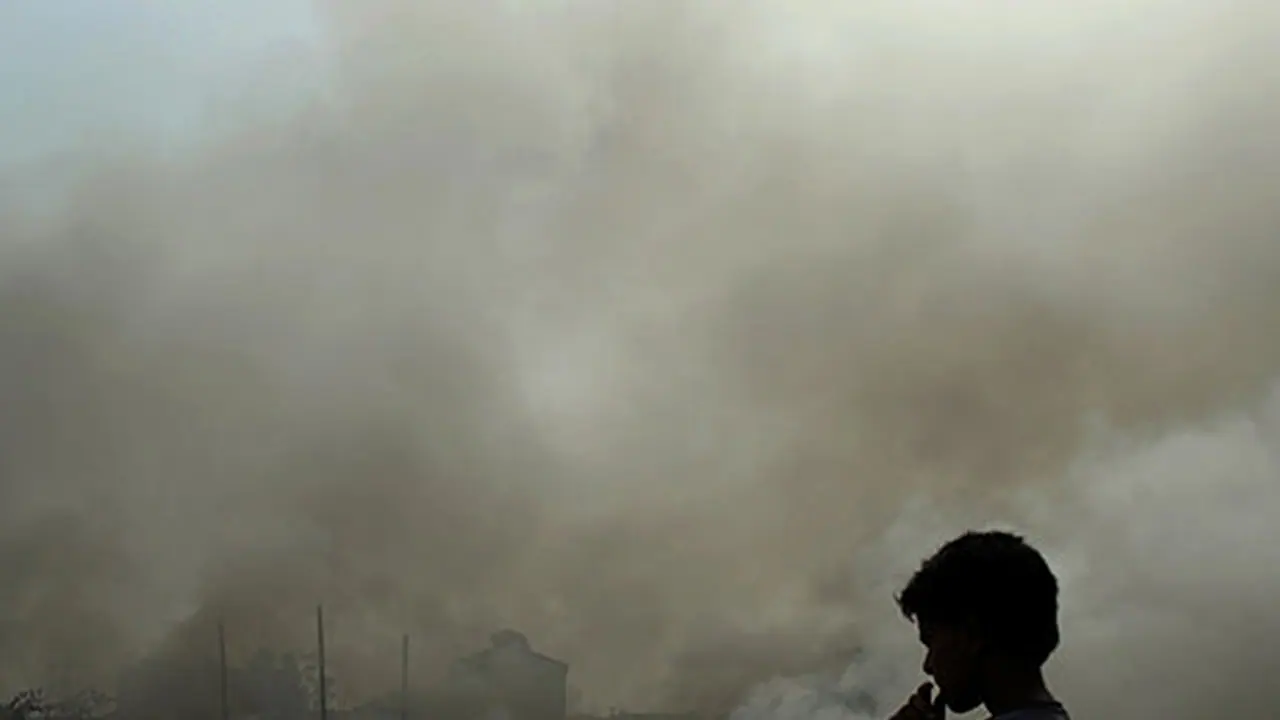According to the study, it was revealed that about 98% of children in the same age group in low and middle-income countries were exposed to air pollution
New Delhi: In a recent verdict, the Supreme Court allowed the sale and bursting of firecrackers for two hours amid huge concerns over pollution, but with conditions. The court said on Diwali, crackers will be allowed for two hours, from 8 pm to 10 pm.
"Only crackers with reduced emission will be allowed and they can be sold through licensed holders," the judges had said.
A new World Health Organisation study says that over 1,00,000 children under five years of age died in India in 2016 due to exposure to toxic air. According to the study, it was revealed that about 98% of children in the same age group in low and middle-income countries were exposed to air pollution.
Here’s what the report, titled 'Air Pollution and Child Health: Prescribing Clean Air', revealed:
• In the report, deaths of about 600,000 children under 15 years of age in 2016 were attributed to the joint effects of ambient and household air pollution.
• "Globally, 93% of the world's children under 18 years of age are exposed to ambient fine particulate matter (PM2.5) levels above WHO air quality guidelines, which include the 630 million of children under 5 years of age, and 1.8 billion of children under 15 years.
• The report, launched ahead of the WHO's first ever Global Conference on Air Pollution and Health, revealed that when pregnant women are exposed to polluted air, they are more likely to give birth prematurely and have small, low birthweight children.
• Another report by Greenpeace presented a grim picture of India's pollution level.
• The green body's report said three of the world's largest nitrogen oxide air pollution emission hotspots that contribute to formation of PM2.5 and ozone are in India with one in the Delhi-NCR.
• Delhi-NCR, Sonbhadra in Uttar Pradesh, Singrauli in Madhya Pradesh and Talcher-Angul in Odisha are the hotspots identified.
• The study said a total of 101,788 deaths under the age of five - 54,893 were girls and 46,895 were boys - were reported due to joint effects of exposure of children to ambient and household PM 2.5 and burden of disease by the country in 2016.
• Out of the over 100,000 deaths in the country in 2016, 60,987 were due to ambient air pollution (32,889 were girls and 28,097 boys), it said.
• Industries, households, cars and trucks emit complex mixtures of air pollutants and form ambient air pollution.
• Due to household air pollution in 2016, about 66,890 deaths of children below five years were reported out of which 36,073 were girls and 30,817 were boys, the WHO report said.
• It said about 98% of children under the age of five years in low and middle-income countries were exposed to air pollution caused by finer particulate matters in 2016.
• Household air pollution from cooking and ambient air pollution caused more than 50% of acute lower respiratory infections in children under five years of age in low- and middle-income countries, it said.
• The WHO report examines the heavy toll of both ambient (outside) and household air pollution on the health of the children across world, particularly in low- and middle-income countries, like India.
• "In low- and middle-income countries around the world, 98% of all children under 5 are exposed to PM2.5 levels above WHO air quality guidelines. In comparison, in high-income countries, 52% of children under 5 are exposed to levels above WHO air quality guidelines," the study says.
• The PM2.5 (or particles with a diameter of less than 2.5 micrometres present in the air), also called "fine particulates", can be a matter of more serious health concern than PM10 (those with a diameter of less than 10 micrometres).
• PM2.5 poses greater harm as being finer, it can easily be inhaled into the respiratory tract.
• The PM2.5 has reached dangerous levels in New Delhi in the last two weeks.
On Monday, a thick blanket of haze engulfed the city, and an overall air quality index of 348 was recorded, which falls in the very poor category, according to data of the Central Pollution Control Board.
The report noted that air pollution is one of the leading threats to child health, accounting for almost one in 10 deaths in children under five years of age.
"Polluted air is poisoning millions of children and ruining their lives," WHO Director-General Dr Tedros Adhanom Ghebreyesus said. "This is inexcusable. Every child should be able to breathe clean air so they can grow and fulfill their full potential," the official said.
Dr Maria Neira, Director, Department of Public Health, Environmental and Social Determinants of Health, WHO, said, "Air Pollution is stunting our children's brains, affecting their health in more ways than we suspected."
D Saha, an environmentalist, said India is a tropical country and the influence of natural dust is much higher as compared with developed countries. "The self-neutralisation of natural dust is much higher as compared to the emitted pollutants," he said.
With PTI inputs
